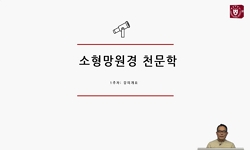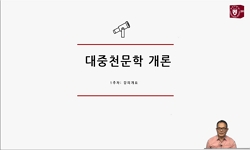The character di(帝) held significant meaning in the social culture and politi cal organizations of ancient East Asia. It was established as a symbolic concept that legitimized the political actions of the ruling elite and was recognized as a central...
http://chineseinput.net/에서 pinyin(병음)방식으로 중국어를 변환할 수 있습니다.
변환된 중국어를 복사하여 사용하시면 됩니다.
- 中文 을 입력하시려면 zhongwen을 입력하시고 space를누르시면됩니다.
- 北京 을 입력하시려면 beijing을 입력하시고 space를 누르시면 됩니다.
https://www.riss.kr/link?id=A109638906
-
저자
박성우 (국립순천대학교)
- 발행기관
- 학술지명
- 권호사항
-
발행연도
2025
-
작성언어
Korean
-
주제어
excavated documents ; di(帝) ; observatory ; astronomy ; Zhongyuan-centric ideology ; 출토문헌 ; 帝 ; 관측기구 ; 천문 ; 중원중심사상
-
등재정보
KCI등재
-
자료형태
학술저널
- 발행기관 URL
-
수록면
181-205(25쪽)
- DOI식별코드
- 제공처
-
0
상세조회 -
0
다운로드
부가정보
다국어 초록 (Multilingual Abstract)
Then, what was the true nature of di(帝) that ancient societies revered, and how did it become deeply embedded in their thought systems? Clearly, this phe nomenon emerged because of the accumulation of collective cultural structures a nd was shaped by the intricate intertwining of history, philosophy, and politics —unique characteristics of East Asian civilization. Thus, understanding di(帝) p rovides a gateway to grasping the broader context and archetypes of ancient Ea st Asian civilization.
As is well known, Chinese characters, as logographic symbols, reflect ancie nt ideological and cultural elements in their formation. Analyzing these character s with historical and cultural data can give insights into the origins of di(帝).
This study examines the ancient forms and evolution of the character di (帝), as well as its usage in historical literature, in an effort to determine its ori ginal meaning. By referencing previous research and analyzing its occurrences i n both excavated and traditional texts, this paper explores how the character di (帝) evolved into a symbol representing political authority and divine legitimacy.
From the earliest times, ancient East Asian political groups perceived thems elves as occupying the center of their territorial space, from which all things in the universe were governed. According to oracle bone inscriptions from the Sha ng dynasty, the ruling elite regarded society and nature as being regulated from the central point of physical space. They structured their domain by dividing it into five regions—the center and the four cardinal directions of east, south, west, and north. Additionally, they integrated the concept of vertical space with this territorial framework, aligning physical height with the five-directional system.
As a result, they believed they ruled over all beings in the natural world from the central position of a six-directional space.
Based on this perception, they established observatories at central positions on earth to model celestial bodies and monitor their patterns of change. The sy mbolic representation of such observational tools was incorporated into written characters. In other words, di(帝) is an ideographic character that implicitly emb odies Zhongyuan-centric ideology, in which the ancient ruling class deified them selves and regarded their central position as sacred.
The character di(帝) held significant meaning in the social culture and politi cal organizations of ancient East Asia. It was established as a symbolic concept that legitimized the political actions of the ruling elite and was recognized as a central object of worship that governed the institutions and order of collective s ociety. In other words, di(帝) has consistently represented entities endowed with political, social, and natural authority, serving as the standard for determining th e legitimacy of monarchical rule.
Then, what was the true nature of di(帝) that ancient societies revered, and how did it become deeply embedded in their thought systems? Clearly, this phe nomenon emerged because of the accumulation of collective cultural structures a nd was shaped by the intricate intertwining of history, philosophy, and politics —unique characteristics of East Asian civilization. Thus, understanding di(帝) p rovides a gateway to grasping the broader context and archetypes of ancient Ea st Asian civilization.
As is well known, Chinese characters, as logographic symbols, reflect ancie nt ideological and cultural elements in their formation. Analyzing these character s with historical and cultural data can give insights into the origins of di(帝).
This study examines the ancient forms and evolution of the character di (帝), as well as its usage in historical literature, in an effort to determine its ori ginal meaning. By referencing previous research and analyzing its occurrences i n both excavated and traditional texts, this paper explores how the character di (帝) evolved into a symbol representing political authority and divine legitimacy.
From the earliest times, ancient East Asian political groups perceived thems elves as occupying the center of their territorial space, from which all things in the universe were governed. According to oracle bone inscriptions from the Sha ng dynasty, the ruling elite regarded society and nature as being regulated from the central point of physical space. They structured their domain by dividing it into five regions—the center and the four cardinal directions of east, south, west, and north. Additionally, they integrated the concept of vertical space with this territorial framework, aligning physical height with the five-directional system.
As a result, they believed they ruled over all beings in the natural world from the central position of a six-directional space.
Based on this perception, they established observatories at central positions on earth to model celestial bodies and monitor their patterns of change. The sy mbolic representation of such observational tools was incorporated into written characters. In other words, di(帝) is an ideographic character that implicitly emb odies Zhongyuan-centric ideology, in which the ancient ruling class deified them selves and regarded their central position as sacred.
동일학술지(권/호) 다른 논문
-
出土醫書 속 鑛物類 약재 ‘番石’, ‘石帆’, ‘黑石’, ‘鐵落’에 대한 考釋 및 현대표준학술명(IPC)과의 대응 연구
- 한국중어중문학회
- 이경
- 2025
- KCI등재
-
- 한국중어중문학회
- 안영은
- 2025
- KCI등재
-
说唱歌词中的韵律修辞探析- 以《中国有嘻哈》中出现的歌曲为例
- 한국중어중문학회
- 유소희
- 2025
- KCI등재
-
- 한국중어중문학회
- 김미영
- 2025
- KCI등재





 DBpia
DBpia






